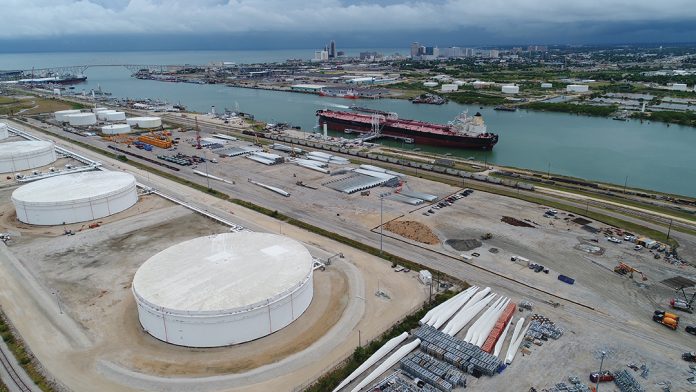
What You Should Know About Oil and Gas Today
The Big Story
Oil prices fell back temporarily Wednesday afternoon after OPEC released its latest outlook for 2020 average crude demand. The bearish part of that report was that the cartel’s estimate of average crude demand for the year was essentially unchanged, projecting a decline of 9.1 million barrels of oil per day as compared to 2019.
To no one’s real surprise, OPEC expects the biggest part of that decrease to occur during the second quarter, as reported by Barron’s: “The COVID-19 pandemic has negatively affected global economic activities, eliminating global oil demand growth potential and leading to a year over year decline of 6.4 million barrels per day in the first quarter and by 17.3 million barrels per day year over year in the second quarter,” the report says. In normal times, oil demand is about 100 million barrels per day.
On the positive side, after WTI slid down to $37.21 per barrel, prices quickly recovered with that index price sitting right at $38 as of this writing.
In other news…
In another bit of positive news, Shale Magazine Publisher Kym Bolado and I just finished an interview with IHS Markit Vice President Jim Burkhardt. One of Jim’s focus areas at IHS is keeping an eye on crude oil inventories around the globe, and he authored a piece this week chronicling China’s unprecedented build of more than 440 million barrels during the first half of this year. The good news is that, during the course of that interview, Jim told us that he thinks there is no longer a reason to fear the U.S. could run out of crude storage thanks to rising demand around the world. So at least that potential crisis appears to have been diverted.
Rystad Energy is now pushing demand-side Peak Oil theory with a new report released yesterday. The firm predicts that the economic impacts of the COVID-19 pandemic will accelerate the shift away from fossil fuel-based energy towards renewable source, a prospect that seems problematic given that renewables still require massive government subsidies to compete in the marketplace. With governments all over the world having to incur vast new debt due to the economic shutdowns in place, it’s pretty hard to see where Rystad thinks the money will be found to ramp up renewable subsidies to even higher levels.
Stephen Milloy has a solid piece at RealClearEnergy today analyzing Joe Biden’s constantly-shifting positions on whether or not to ban hydraulic fracturing. It is definitely worth a read.
Pipeline companies won a big victory at the U.S. Supreme Court this week, but still face massive challenges getting natural gas produced in the Marcellus shale region out to various markets. Scott Carpenter does a good job of analyzing that situation at Forbes.
Misleading headline of the day award goes to Reuters with this one: “U.S. shale companies to boost oil output by 500,000 bpd by month-end”. The topic of what is in fact a very accurate piece has to do with the fact that shale companies are indeed re-staring a substantial number of wells they had shut-in during the depths of the price collapse during March and April.
That headline would lead the reader to believe that overall U.S. production will grow by half a million barrels per day during June, but that is not at all the case. When you factor in the paltry amount of new drilling currently taking place with record-low rig counts along with the natural decline rates of existing wells, the reality is that total U.S. production will most likely decline during the month.
So, good report with a bad headline.
That’s all for today.
















